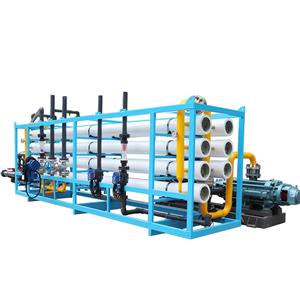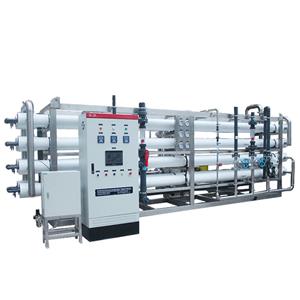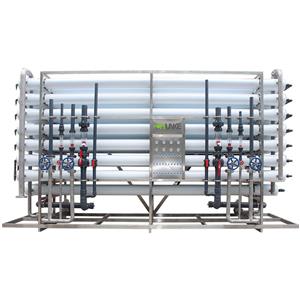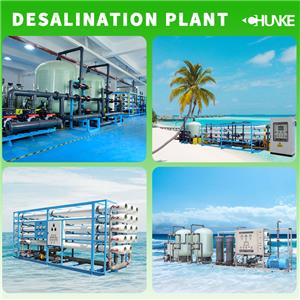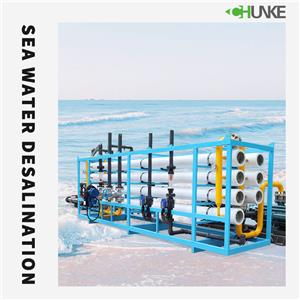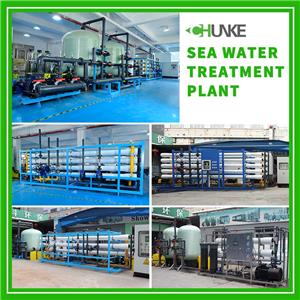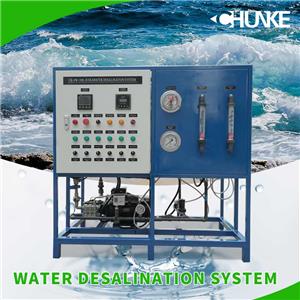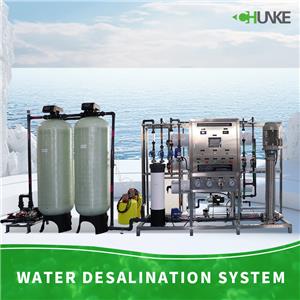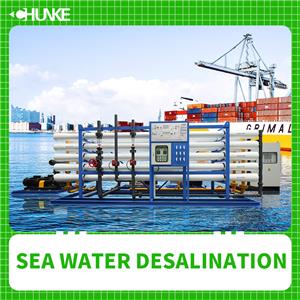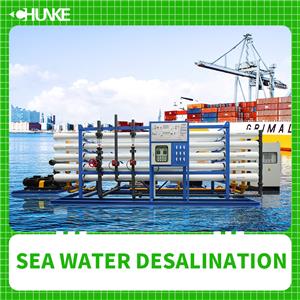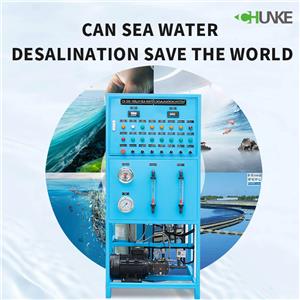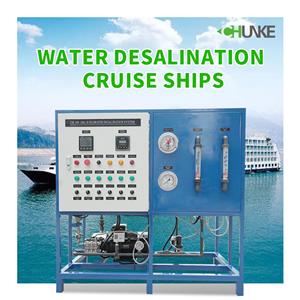-
04-26 2024
Does reverse osmosis(RO) work on seawater?
Reverse osmosis is a membrane technology widely used in the field of seawater desalination. Its basic principle is to utilize a semi-permeable membrane. When seawater passes through this membrane, most dissolved substances (such as salts, impurities and microorganisms) are effectively rejected, and only pure water penetrates to the other side. Through this process, seawater is converted into fresh water for human use.
-
04-25 2024
What are two reasons why sea water desalination is not widely used?
1. High energy demand: The most important technology in the seawater desalination process is reverse osmosis (RO) technology, which requires a large amount of energy to drive a high-pressure pump to filter seawater through a semipermeable membrane. 2. Expensive technology costs: In addition to high energy requirements, sea water desalination plants also need to invest a lot of money to purchase and maintain reverse osmosis membranes, high-pressure pumps and other equipment, and perform regular maintenance and updates.
-
04-23 2024
How much water is desalinated by the seawater desalination plant every day?
According to statistics, there are currently about 16,500 seawater desalination plants in operation around the world, spread across 185 countries. The plants can produce an estimated 110 million cubic meters of fresh water per day. This means that a considerable amount of seawater is desalinated every day and becomes a freshwater resource that can be used by people.
-
04-23 2024
Why is seawater desalination harmful to the environment?
Sea water desalination is a technology that removes salt from seawater, but the process produces harmful by-products that negatively impact the environment. The main concerns are the discharge of treated brine and the possible contaminants produced during the production process.
-
04-22 2024
Why do environmentalists oppose seawater desalination systems?
Environmentalists worry that seawater desalination projects may have negative impacts on local fisheries and marine ecosystems. Seawater desalination plants may inhale marine life, especially fish larvae, causing damage to fishery resources. In addition, wastewater and salt water may be discharged during the sea water desalination process, causing pollution and disturbance to the marine ecosystem.
-
04-18 2024
What happens to the salt after seawater desalination?
The salt treatment process after sea water desalination may have a certain impact on the surrounding environment. For example, the salt discharge process may affect the balance of the marine ecosystem and have a certain impact on organisms and plants in the surrounding sea areas. Therefore, seawater desalination plants need to take appropriate measures to reduce the impact of salt emissions on the environment.
-
04-15 2024
Can solar power power a desalination plant?
Solar energy has broad application prospects in seawater desalination. Solar energy can directly drive thermal desalination systems, converting solar energy into thermal energy through solar collectors, providing the required energy to evaporate and condense seawater, thereby achieving desalination.
-
04-12 2024
How is sea water desalination performed?
Distillation is one of the traditional methods of seawater desalination. Its basic principle is to evaporate water by heating seawater, and then condense the evaporated water vapor into fresh water. Reverse osmosis is one of the most widely used technologies for sea water desalination. This method intercepts salt and impurities in seawater through a semipermeable membrane. In addition to distillation and reverse osmosis, there are some other sea water desalination methods, such as ion exchange, electrodialysis, etc.
-
04-08 2024
can sea water desalination save the world?
Sea water desalination may be the key to avoiding global water shortages, but it will take time. Clean fresh water is vital to sustaining human life. However, seawater desalination plants also bring environmental pollution problems. The seawater desalination process produces waste and toxic chemicals that are harmful to wildlife and the earth.
-
04-05 2024
Do cruise ships use seawater desalination?
Most cruise ship water is desalinated seawater. The process typically involves steam evaporation—essentially converting salt water into distilled water. The water is then mineralized for added flavor and chlorinated for improved safety. Other ships are equipped with reverse osmosis systems for filtration and/or desalination.

